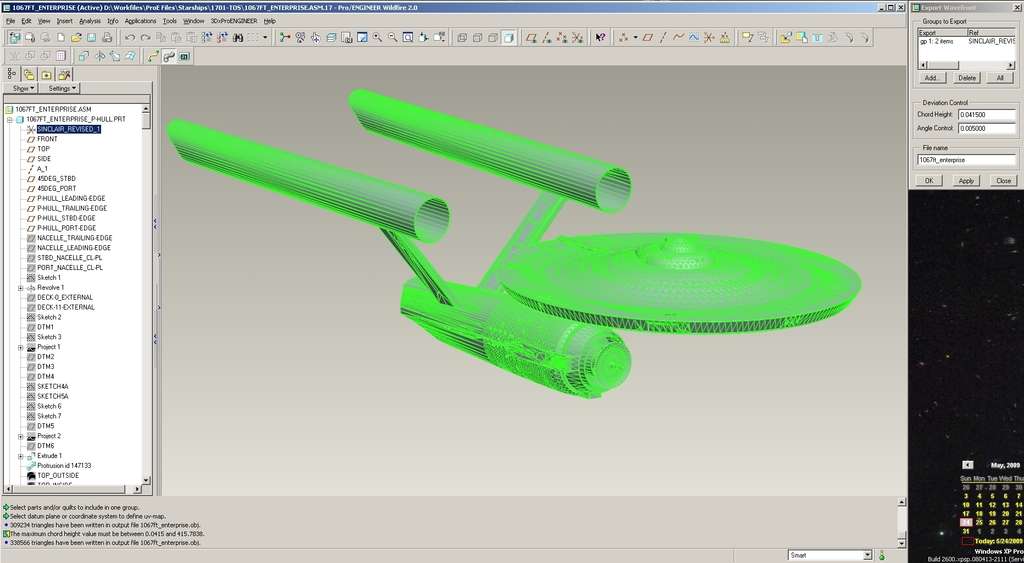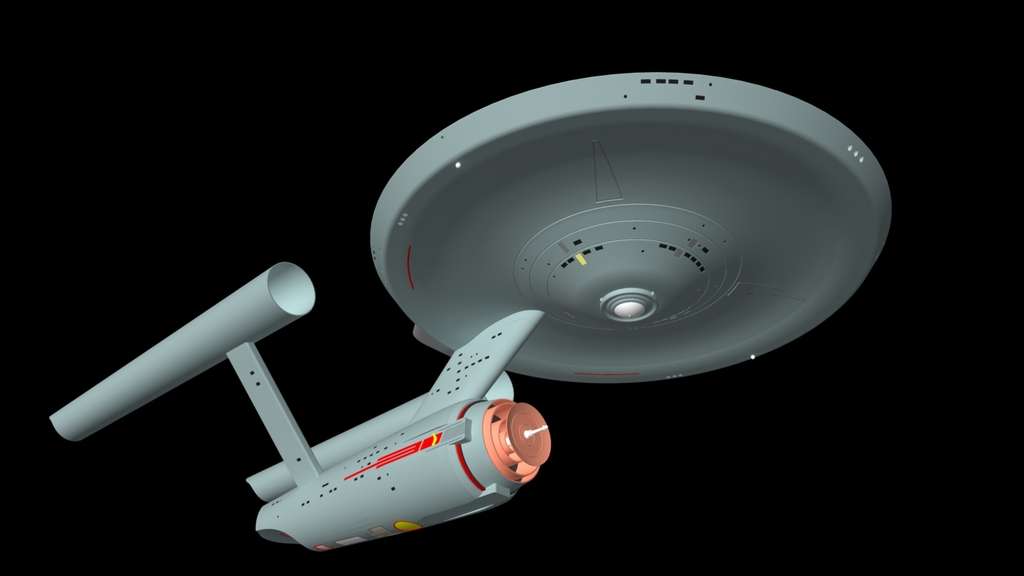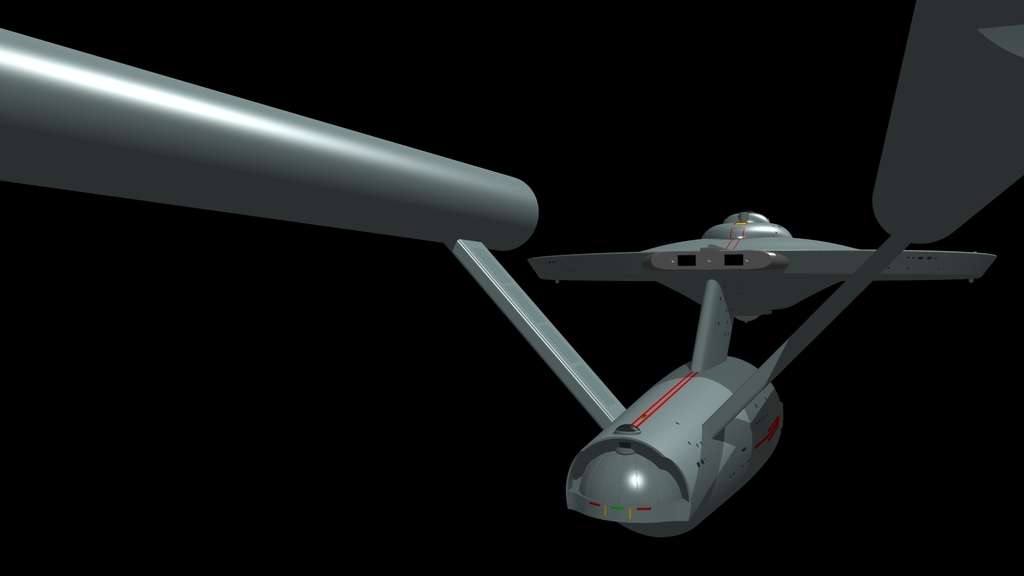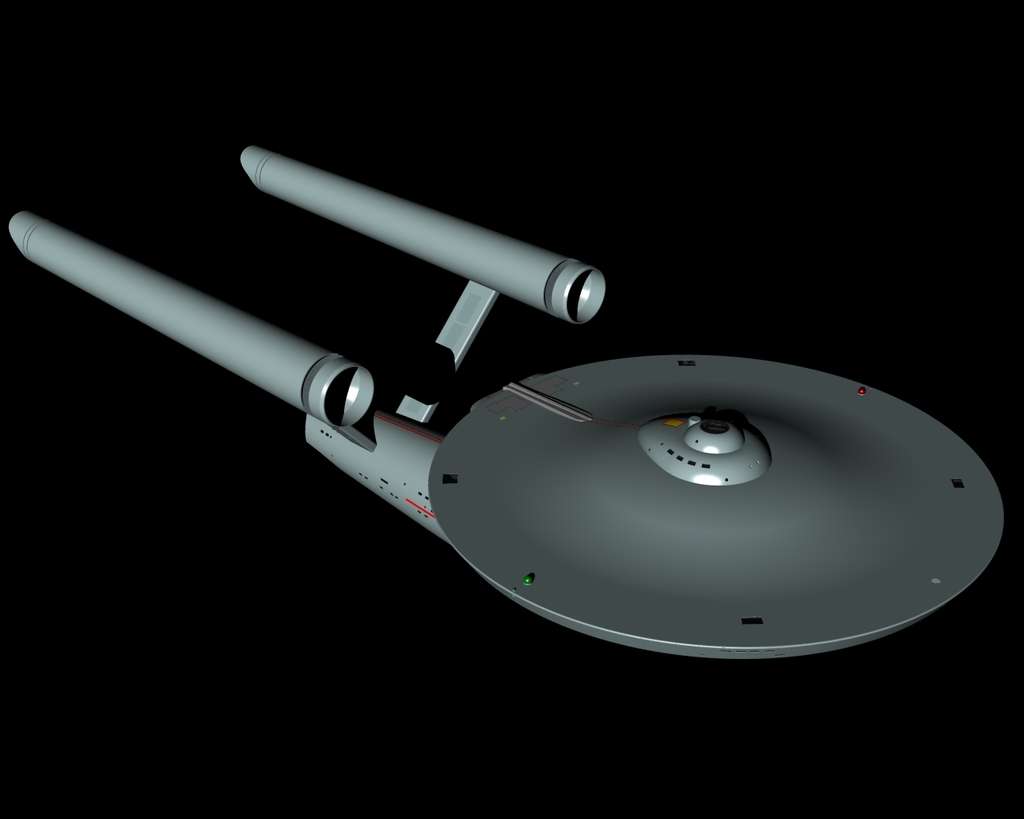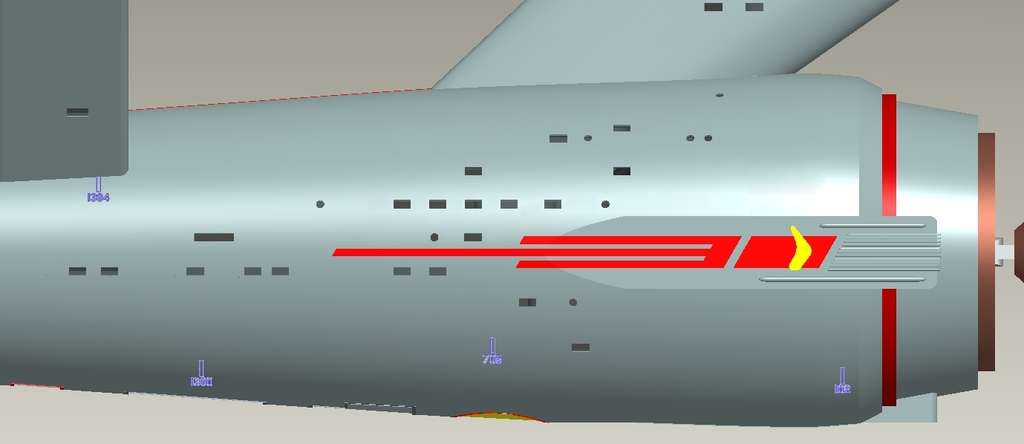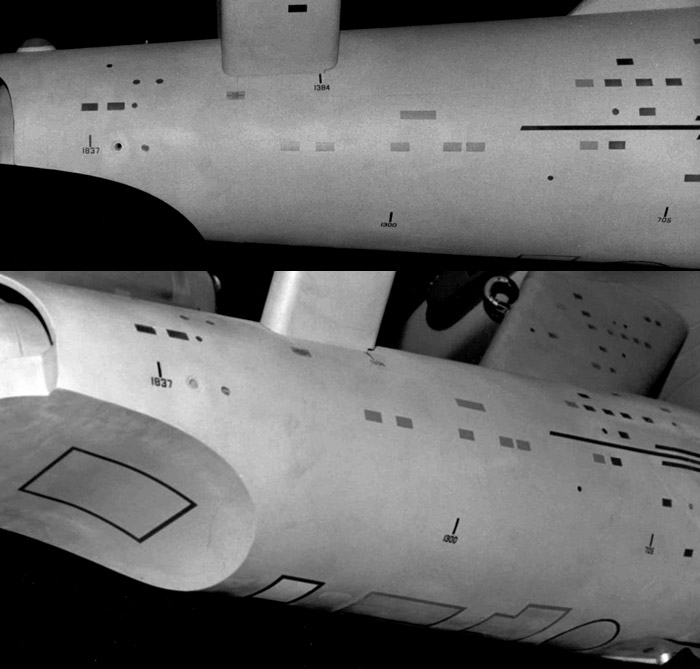Well, I finished off the exterior of the secondary hull tonight, and I've gotten a tiny bit more done inside of the nacelles (though I'm not yet ready to show off what I'm doing, as I'm still going back and forth on a few major issues and may delete some of what I've done).
But, I did spend a little bit more time playing around with rendering, and (for my own use) created a few "wallpaper-friendly" images. Of course, this isn't finished, so I don't expect anyone will want to use them as such except me, but I thought I'd go ahead and share them anyway. These images are 1920x1080, so I'm providing them as thumbnails.
I played around with focal lengths here. Most of the shots you see are shot with 12mm very-wide-angle lenses, with the exception of the last one, which I did with a standard 28mm lens (remember, my model is in 1:1 scale) so this looks like the "real" ship would look if shot with that sort of lens from this position.
I wanted to go single-light-source, but the shadows were just TOO dark, and while I'd be inclined to do that if self-illumination were present, and/or if I were doing an animation (where the shadowed areas wouldn't be constant from frame to frame) in this case, I decided a minor "fill" light was still needed. In most cases, the main lights have an intensity of 9x the fill light, with the exception of the last image where the main light is 3x the fill. I think the results look pretty good, but realistically, there should be no fill light whatsoever except for in the final image.
First, a replication of a couple of fairly common TOS shots:

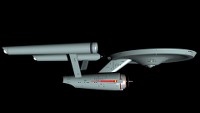
Next, a couple of "dynamic" shots... the latter is a close representation of an image from a comic cover I remember from years ago, in fact... I thought that these made the best "wallpaper" compositions.
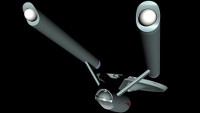
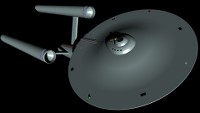
Finally, the 28mm shot, with the extra fill light. This is a quick-and-dirty attempt to replicate what the ST-09 1st Trailer shot would have looked like had they used the "real" Enterprise.
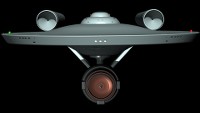
You've probably noticed two color choices on the nacelles... one of which I am definitely going to change, the other which I'm very happy with.
First, the angled rings behind the (as yet not present) dome... I colored them "blued steel" but they seem to be almost irridescent, which is unacceptable. Obviously, I'm going to have to change that.
Second, the aft nacelle balls... which, in my case, are the actual warp field generation elements... I've colored a slightly off-white color intended to represent polished ceramic. They're not LIT, they're just lighter-colored... but they're definitely consistent with the TOS look. I've been thinking that if the ship is actually at warp, these might in fact produce some light. But few of the TOS shots showed these when the ship was at warp, so the trick is to keep things consistent with what was seen on-screen while still trying to make them make some sort of scientific/engineering/generally-logical sense. Having a super-hard ceramic coating over this device makes a great deal of sense to me... we do that all the time for our most "hardened" electronic components, after all.




